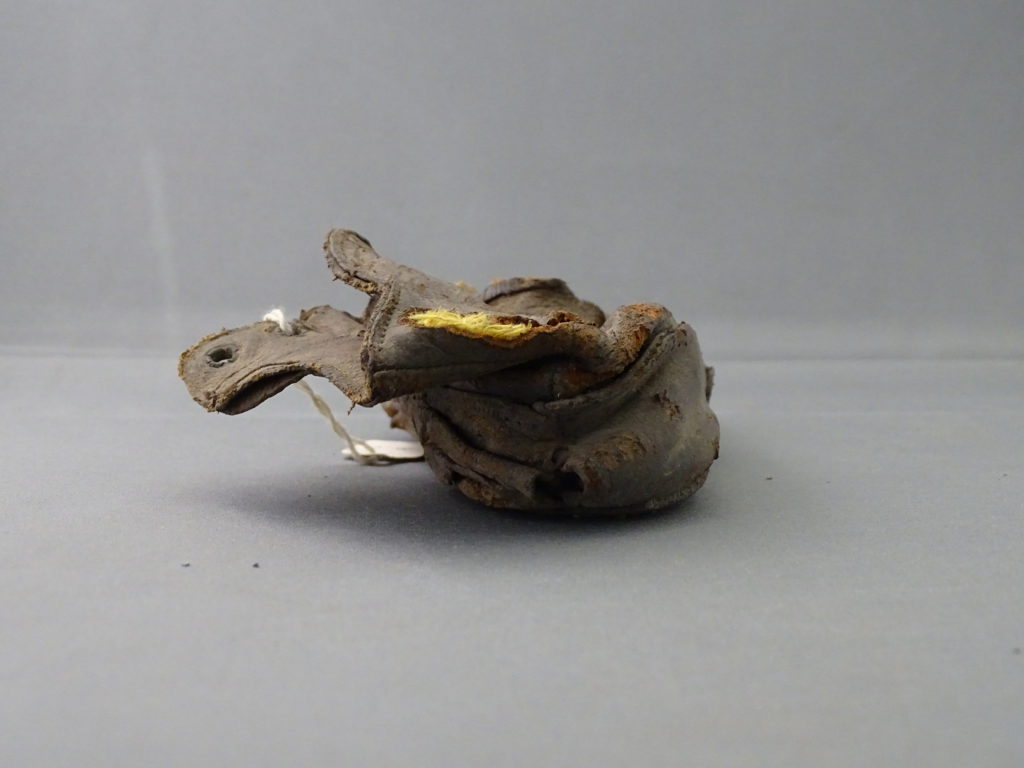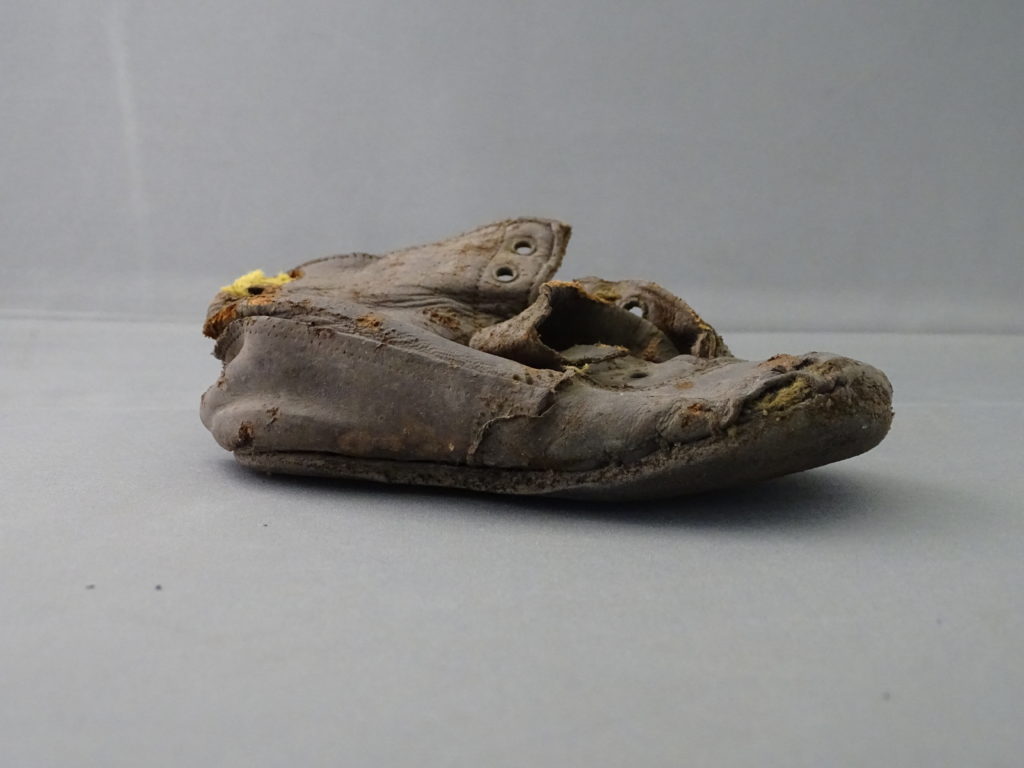Child’s Boot
Article by Cara Ross
The use of shoes in English folklore has a long history, one that is rooted in the traditional oral superstitions that spans even to the modern day. However, by its nature, the roots of these traditions are hard to pin down; passed from generation to generation through bedtime stories and old wives tales. You need only look at the back of newlyweds car’s to see how these traditions live on, with shoes often trailed behind the couple for good luck. This practice is traced to the Tudor period in which individuals due to undergo a long journey were subjected to the hurling of shoes, and if one struck their carriage (or their person!), the individual was said to have good luck.
It appears that shoes were particularly associated with women and children, and another practice has young women placing their shoes at right angles to each other before bed in an attempt to bring on dreams of their one true love. Other superstitious practices, that perhaps can be best described as magic, include shoes as objects of luck and were often placed within the home to protect it.
It has been suggested that the origins of these practices developed because shoes are dirty. A theory that is sustained through the traditional phrase “where there is muck, there is luck”, which promoted the idea that there was success to be found in difficult activities. Furthermore, a worn shoe was a symbol of a well-lived and long life. By passing this object onto others, this also passed on the luck. As a result, shoes were often hidden in secret places that have only been revealed upon the renovation of these buildings, and now often reside in local museums.
In a slightly darker turn, our example here is that of a child and therefore does not fit into this idea of a long life. This shoe dates from approximately the early twentieth-century, though its exact date is unknown. The laced closure feature separates it from the earlier Victorian period, though with the expense of new shoes it was also a common practice to repair and pass on pieces through the family.



The origins of this piece highlights an element of familial sediment which draws upon traditional folklore. Oral tradition out of Lincolnshire has recorded the practice of burying the shoes of a deceased child within the walls of a home in order to preserve their spirit with their family, or simply to keep a small part of the child with the family.
Perhaps this shoe was lovingly placed within the home to comfort a grieving family, or perhaps it was done to bring luck. However what is clear is that this Egham family had their own traditions, ones we can see traces of through the remnants of their lives.


